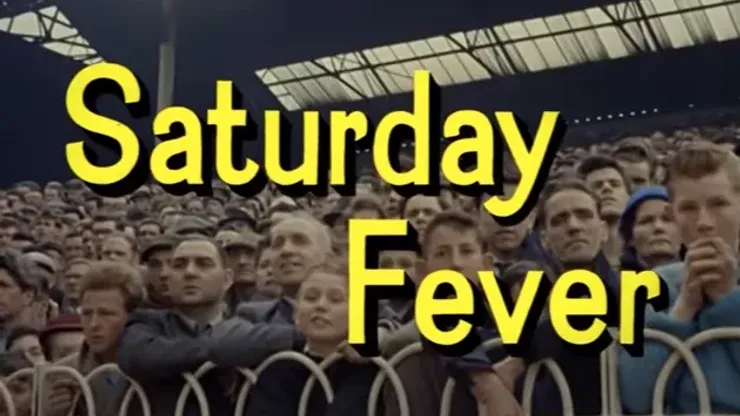If you ever wanted to see how different the game of soccer is on and off the field compared to yesteryear, the following video (entitled Saturday Fever from The Rank Organization) is a prime example.
Featuring footage of Tottenham against Manchester City in the 1960 season, as well as clips of fans at Manchester United, Cardiff City, Wolves and Celtic, the 9-minute film is fascinating to watch.
Immediately the video illustrates notable differences between the game then and now with grounds packed to the rafters with fans stood on the terraces rather than the all-seater arenas that we see today, an issue which is still hotly debated to this day. However the public appetite for the game has not diminished in the 50 or so years which separate the video to the current day with supporters shown traveling in their thousands to support their team.
We are given a glimpse into the day-to-day lives of the elite professional footballers of the time with the narrator rather proudly claiming them to be worth “tens of thousands of pounds” if only he knew what was to come years later with players costing clubs tens of millions of pounds.
The players are only idols one day a week, Saturday, with the footballers of the 1960s able to walk around in public freely without fear of harassment, a luxury not afforded to many top level footballers today. Training sessions take place in around the club’s home stadium with the sheer lack of finance not allowing purpose built training facilities.
It’s interesting that the facilities used by the elite Tottenham Hotspur players in the video are now actually rather reminiscent of what school students would use for Physical Education lessons today, a far cry from the sport science driven Premier League regimes we have today.
Tottenham boss Bill Nicholson is shown introducing his players to a newly created tactical plan for throw-ins on a small chalkboard in the middle of the pitch. Whilst the idea in principle is similar the execution of such a tactic in 2015 would occur over the course of several hours in meeting rooms aided by electronic diagrams and fully immersive apps. It is a completely different world.
Even the action of the pitch is different with the poor state of pitches dictating the style of football played across the land. The sandy dust-bowl goalmouths are present across the country rather than the pristine synthetic grass surfaces we see across the Premier League today. As a result the play is much slower in tempo with crosses into the penalty area the main source of goalscoring chances.
Finally the importance on a single match is illustrated as supporters charge onto the pitch in search of autographs at the end of a regulation league match, not a cup final or a win over a rival team but a mere regular match. Scenes like that are far less common today with security ramped up inside football grounds and supporters only hope of autographs occur in an orderly manner outside the ground hours after the full-time whistle.
The video shows a quick look back at a niche time in English football, the historic World Cup win is still six years away and there has not yet been a British winner of the European Cup, which would come seven years later with Celtic in Lisbon.
In 1960, English football is not yet the global phenomenon that it is today however the narrator ends the video with a saying which is exactly the same in 2015, “Fans could hardly exist without their football and football could hardly exist without the fans.” Showing that however far forward football will move, the fans are still the cornerstone of the game we all love.
Mobile app users, watch the video here.
200+ Channels With Sports & News
- Starting price: $33/mo. for fubo Latino Package
- Watch Premier League, Women’s World Cup, Euro 2024 & Gold Cup
The New Home of MLS
- Price: $14.99/mo. for MLS Season Pass
- Watch every MLS game including playoffs & Leagues Cup
Many Sports & ESPN Originals
- Price: $10.99/mo. (or get ESPN+, Hulu & Disney+ for $14.99/mo.)
- Features Bundesliga, LaLiga, Championship, & FA Cup
2,000+ soccer games per year
- Price: $5.99/mo
- Features Champions League, Serie A, Europa League & Brasileirāo
175 Premier League Games & PL TV
- Starting price: $5.99/mo. for Peacock Premium
- Watch 175 exclusive EPL games per season






